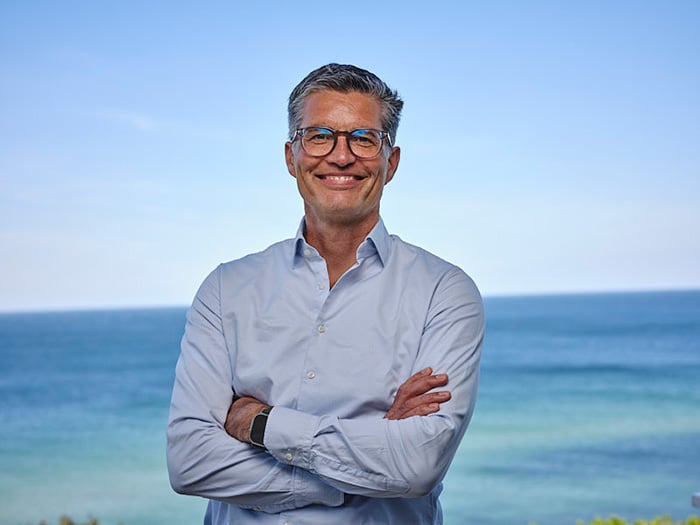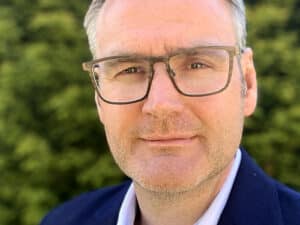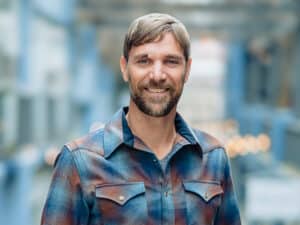
Q&A: Sea’s CEO on sustainable shipping
Written by Heather Ervin
Peter Schroder, the CEO of Sea, an innovative software and integrations company based in the U.K.
Peter Schroder, the CEO of U.K.-based Sea answers our questions on ways shippers can enable sustainable shipping practices
Sea delivers reliable, data-driven solutions that power better decisions to enable sustainable shipping across the entire vessel chartering workflow, from pre-fixture to at-fixture.
Born as a technology spin-off from the Clarksons Group, Sea now operate as an independent company. Leveraging innovative software with strategic collaborations, and integrations with key partners across the maritime ecosystem, Sea is becoming the intelligent marketplace for fixing freight for shipping professionals.
Additionally, Sea develops solutions that optimize processes, diminish complexity, mitigate risk, and deliver higher earnings and reduced costs.
Schroder has a wealth of experience in the world of tech. With a career spanning more than 20 years, he has worked across a wide variety of industries, including telecoms, gaming, publishing and, most recently, shipping. His role as chief digital officer of Maersk Tankers yielded numerous innovations, including the creation of ZeroNorth the vessel optimization platform, the launch of VesselTruth, and the cooperation with CargoMetrics to develop data-driven, evidence-based chartering and fleet allocation signals.
Marine Log (ML): Can you tell us about Sea’s data-driven solutions that enable sustainable shipping across a vessel’s chartering workflow?
Peter Schroder (PS): Our industry is dealing with a legacy of siloed, unstructured, and fragmented data—particularly in our chartering workflows. This lack of standards around the collection and use of data is holding back progress in key areas such as digitalization and decarbonization.
We want to change that. Our goal at Sea is to redefine chartering workflows and continuously develop the intelligent marketplace for fixing freight. In practical terms, this means delivering reliable, data-driven solutions pre- and at-fixture that power better decisions for our customers. In practical terms, this means driving efficiencies that support our users in commercial decision-making and in introducing stronger governance across operations. Our solutions also help customers estimate the carbon impact of their voyages, by providing the right actionable data at the right time throughout the entire workflow.
Within our platform we offer specific solutions to help customers estimate, track, monitor, and report on their emissions. Our Carbon Accounting and Monitoring tools allow users to create dashboards that highlight different benchmarks and targets, enabling them to compare the fleet and analyze performance. We’re also pleased to have recently brought a new solution to market, Carbon Exposure, which builds on this existing offering by utilizing voyage and emission data and using it to help customers make proactive decisions to reduce emissions. This will include helping customers track their anticipated carbon output against the newly expanded EU ETS and understand what costs they’re expected to incur.
ML: With the EU’s ETS now covering any vessels over 5,000 GT entering Europe, ship owners are required to monitor and report their carbon emissions. Can you speak more on this?
PS: We welcome the EU ETS as an important policy step in decarbonizing shipping, and we’re committed to supporting customers in preparing for, and responding to, this new legislation. Organizations can only manage what they measure, and this is especially true with carbon accounting. It’s imperative that owners and operators can track their emissions and improve their voyage carbon profile. From a pre-fixture point of view, players must then understand how the decisions they make at the pre-fixture stage play into this, from vessel selection to chosen speed.
A survey of our platform users from the end of last year found that a fifth (20%) had completed their preparations, so we can assume there’s still a lot of work underway across the industry to adapt to this new regulation. It’s important that all impacted players mobilize procedures to manage how the EU ETS will change every stage of vessel operations, including pre-fixture. Even those not yet impacted must take important learnings from this legislation—it’s a clear sign to the whole industry that we need to accelerate our efforts to decarbonize.
ML: In November 2022, Sea acquired technology company Setapp. How has Sea integrated that company into its business?
PS: Our goal at Sea has always been to create a singular technology organization with deep knowledge and understanding of the maritime industry, and our acquisition of Setapp is a key part of this bigger picture. Harnessing Setapp’s deep technological expertise is an important part of our work to help customers make data-driven decisions, as it allows us to develop custom software that enhances efficiencies and improves digital integrations amongst our customers’ workflows. In short, it means we’re better placed to provide additional support to our customers as they embrace digitization in this area.
Setapp is now fully incorporated under the Sea brand and into the organization and forms the basis of our second business stream and is dedicated to developing software for the maritime trade ecosystem.
ML: More recently, we covered the fact that Sea signed a knowledge partnership agreement with Maersk Mc-Kinney Moller Center for Zero Carbon Shipping. How is the partnership going and what can we expect?
PS: The partnership has been in effect for several months and has been progressing well. As the Center’s knowledge partner, we have been providing access to our pre-trade intelligence and analytics tools. These process over 68.7 billion AIS data points annually, which is providing the Center with greater visibility of global activity across ports and vessel deployment. Specifically, the data is being used to helping to fast-track projects the Center is undertaking in areas such as the development and implementation of green corridors, which will be vital to decarbonising shipping routes.
In the coming months, we’re hoping to share our learnings in areas such as new viable green corridors, and insights into smarter management of fleet speeds and strategies for carbon reduction. It’s a privilege to be working so closely with the Centre on our shared goal to decarbonise the shipping industry, and we’re proud to be contributing to such an important goal.
ML: What’s next for Sea and its shipping customers?
PS: 2023 was a great year for Sea, and we’re set to continue this momentum in 2024. Our main goal is of course to progress our efforts in building the intelligent marketplace for fixing freight. The potential of digitalization and data is difficult to overstate for the shipping industry, and through a mix of innovation and collaboration with like-minded partners across the industry, we’re working to realize this potential.
2024 has started strong with the recent launch of our Carbon Exposure solution, and we’re working closely with our customers to continue adding new features and functionalities that meet the evolving needs of charterers, brokers, and ship owners. On that front, we’re already planning the roll-out of several new features to boost the compliance and sustainability efforts of our users, while we also will be upgrading core functionalities on the trading, negotiation and contracting side. All this will help us expand to new customers in sectors such as crude oil and agriculture and will allow them to unlock the benefits of our platform.




